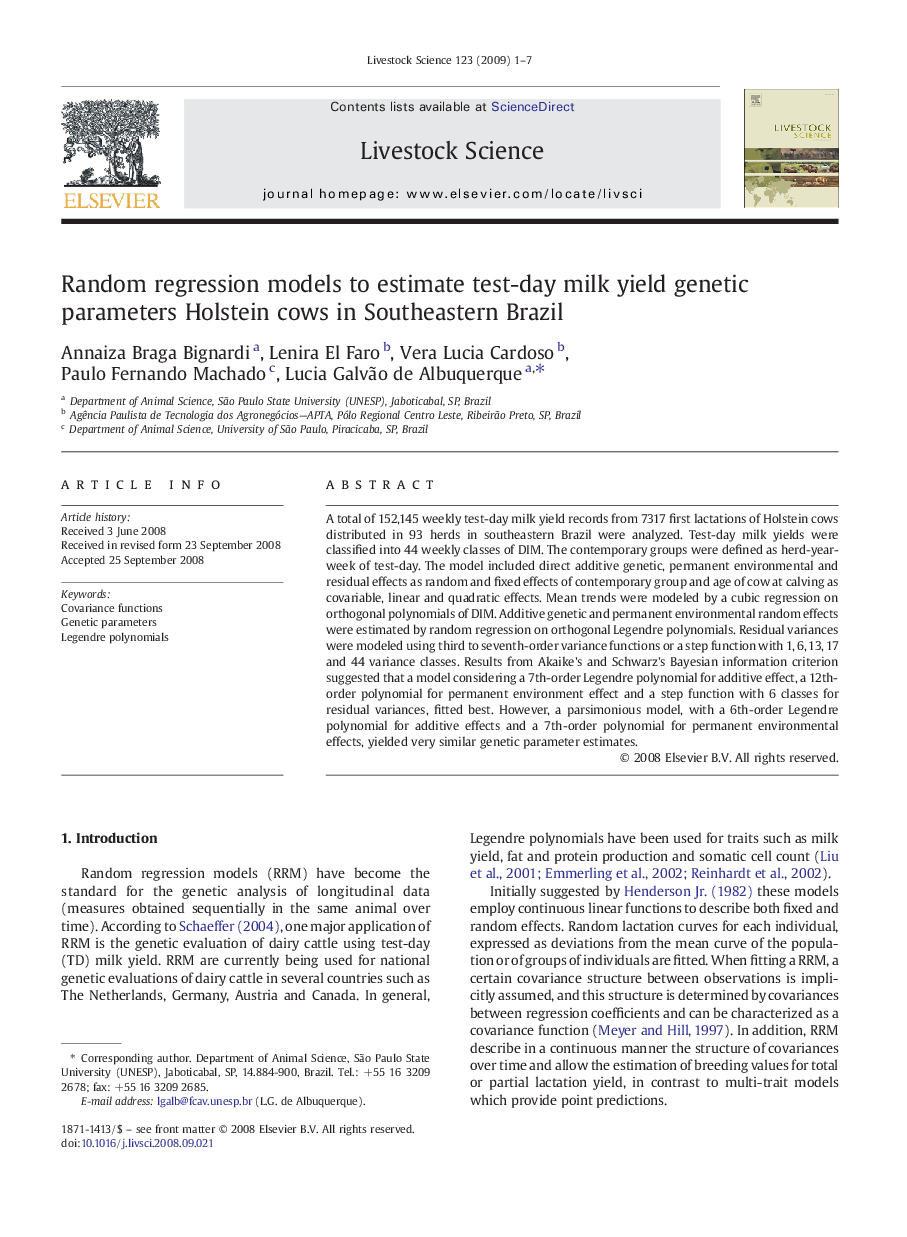| Article ID | Journal | Published Year | Pages | File Type |
|---|---|---|---|---|
| 2448183 | Livestock Science | 2009 | 7 Pages |
A total of 152,145 weekly test-day milk yield records from 7317 first lactations of Holstein cows distributed in 93 herds in southeastern Brazil were analyzed. Test-day milk yields were classified into 44 weekly classes of DIM. The contemporary groups were defined as herd-year-week of test-day. The model included direct additive genetic, permanent environmental and residual effects as random and fixed effects of contemporary group and age of cow at calving as covariable, linear and quadratic effects. Mean trends were modeled by a cubic regression on orthogonal polynomials of DIM. Additive genetic and permanent environmental random effects were estimated by random regression on orthogonal Legendre polynomials. Residual variances were modeled using third to seventh-order variance functions or a step function with 1, 6, 13, 17 and 44 variance classes. Results from Akaike's and Schwarz's Bayesian information criterion suggested that a model considering a 7th-order Legendre polynomial for additive effect, a 12th-order polynomial for permanent environment effect and a step function with 6 classes for residual variances, fitted best. However, a parsimonious model, with a 6th-order Legendre polynomial for additive effects and a 7th-order polynomial for permanent environmental effects, yielded very similar genetic parameter estimates.
